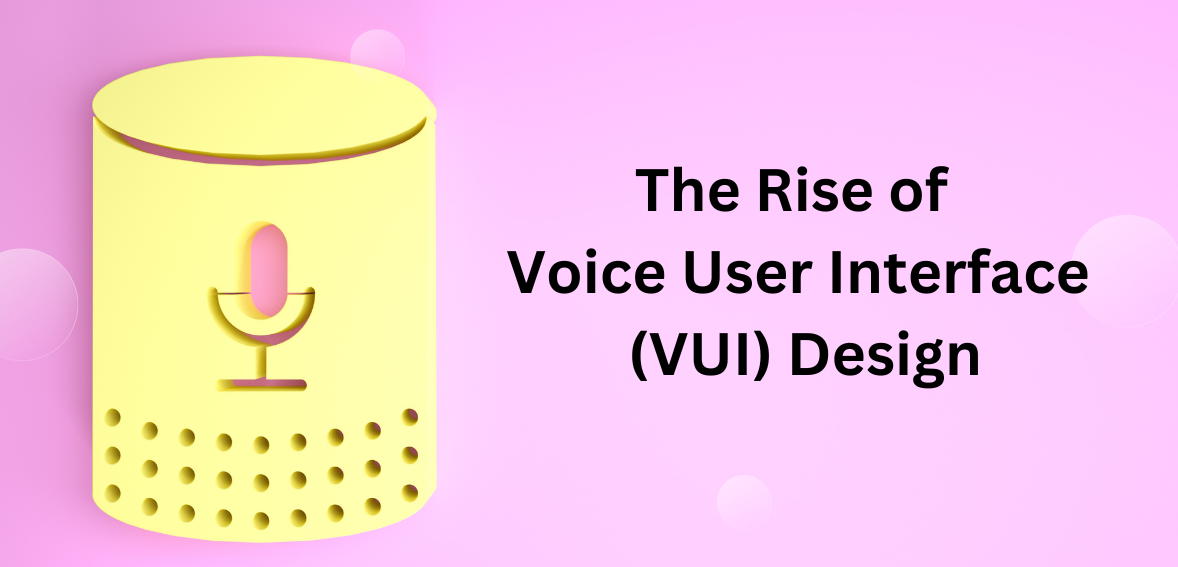Technology interaction has shifted dramatically in recent years with the emergence of Voice User Interface (VUI) design. This article delves into the evolution of VUIs, emphasizing their pivotal role in creating smooth voice-activated interactions. It discusses challenges confronting designers, highlights best practices, showcases successful implementations, and offers insights into future trends within this dynamic field.
VUIs represent a fundamental shift in human-computer interaction, offering users a more intuitive and natural way to engage with technology. By understanding the evolution, challenges, and best practices associated with VUI design, developers can create more seamless and user-friendly voice interfaces, paving the way for enhanced user experiences and increased adoption of voice-activated technologies.
Introduction to Voice User Interface (VUI) Design
Voice User Interface (VUI) design focuses on crafting interfaces that enable users to interact verbally with devices and applications. Unlike traditional Graphical User Interfaces (GUIs), VUIs depend on speech recognition technology to interpret and execute user commands. Through spoken language, users can navigate, control, and access functionalities seamlessly without needing physical input methods like keyboards or touchscreens.
This approach revolutionizes human-computer interaction by offering a more natural and intuitive way for users to communicate with technology. VUI design requires meticulous attention to speech recognition algorithms, natural language processing, and user experience considerations to ensure accurate interpretation and response to diverse commands. As voice technology advances, VUIs play an increasingly significant role in enhancing accessibility and usability across various digital platforms and devices.
Evolution of Voice Technology
Early developments in voice technology began with rudimentary experiments in speech synthesis and recognition, dating back to the mid-20th century. These foundational endeavors paved the way for today’s sophisticated Voice User Interfaces (VUIs). Early technologies struggled with limited vocabulary and accuracy, but they laid crucial groundwork for subsequent advancements.
Natural language processing (NLP), machine learning, and artificial intelligence (AI) advancements have propelled VUI evolution. NLP algorithms enable systems to comprehend and process human language more accurately, while machine learning algorithms continually refine and improve recognition capabilities. Moreover, AI-driven approaches allow VUIs to adapt and learn from user interactions, enhancing their ability to understand nuanced commands and context.
These technological advancements have transformed VUIs from basic speech recognition systems into intuitive interfaces that engage in natural, human-like conversations. Today’s VUIs can decipher diverse accents, understand complex commands, and provide personalized responses, revolutionizing how users interact with technology in various domains, such as virtual assistants, smart home devices, and automotive systems.
Understanding VUI Design Principles
The user-centric approach in VUI design prioritizes placing users at the forefront of the design process. Designers delve into understanding user behaviors, preferences, and expectations to craft intuitive and user-friendly voice interfaces. By focusing on user needs, designers can create VUIs that resonate with users and enhance their overall experience.
Natural Language Processing (NLP) is a cornerstone of VUI design, allowing interfaces to understand and process spoken language akin to human comprehension. This capability enables VUIs to engage in seamless and natural conversations with users, enhancing the user experience and usability.
Accessibility considerations are integral to inclusive VUI design. Designers must cater to users with disabilities by incorporating accessibility features such as voice commands and auditory feedback. These features ensure that VUIs are accessible to all users, regardless of their abilities, promoting inclusivity and equal access to technology.
Importance of Seamless Voice-Activated Experiences
VUIs revolutionize user engagement by providing a hands-free and convenient means to interact with technology. Users can effortlessly engage with devices and applications through voice commands, eliminating the need for manual input methods. This seamless interaction fosters higher engagement and satisfaction among users, as they can effortlessly access functionalities and accomplish tasks.
Moreover, VUIs streamline tasks by enabling users to execute actions swiftly and efficiently through voice commands. By bypassing the need for manual input, VUIs expedite workflows and enhance productivity. Users can perform various tasks, from setting reminders to controlling smart home devices, with minimal effort, saving time and effort in the process. This streamlined approach to task execution contributes to a more efficient and productive user experience, further enhancing engagement with VUI-enabled technologies.
Challenges in VUI Design
Accuracy and reliability are significant challenges for VUI designers, particularly in environments with noise or diverse accents. Despite advancements, ensuring precise speech recognition remains an ongoing endeavor, impacting the effectiveness of voice interactions.
Context awareness is crucial for VUIs to understand user inputs and respond accordingly. Sophisticated algorithms and data processing capabilities are essential to decipher user intent within various contexts, enhancing the overall user experience.
With the integration of VUIs into daily life, privacy concerns arise regarding data security. Designers must prioritize user privacy and implement robust security measures to safeguard sensitive information. Addressing these concerns is vital to building trust and ensuring the widespread adoption of VUI technology while protecting user privacy.
Best Practices for Crafting Effective VUIs
Clear and concise prompts are essential in guiding users on effectively interacting with VUI. Using straightforward language allows users to quickly grasp the available actions and navigate the interface seamlessly, resulting in a more intuitive user experience.
Feedback mechanisms play a crucial role in confirming users’ commands and actions. Through auditory or visual cues, users receive confirmation that their commands were successfully executed, enhancing their confidence in the system and promoting trust in the VUI’s reliability.
Personalization options enable users to tailor their VUI experience to their preferences, fostering a sense of ownership and control. By allowing users to customize settings and preferences, VUIs can enhance user satisfaction and engagement, as users feel more connected to the interface and its functionalities. Clear prompts, effective feedback, and personalized options contribute to a more user-friendly and engaging VUI experience.
Examples of Successful VUI Implementations
Virtual assistants, including Amazon Alexa, Google Assistant, and Apple Siri, have transformed technology interaction by offering personalized assistance and task automation. These assistants leverage VUIs to understand and execute user commands, enabling users to perform various tasks effortlessly. Virtual assistants streamline daily activities, from setting reminders to accessing information, enhancing convenience and productivity.
Smart home devices integrated with VUIs further revolutionize the concept of home automation. Users can control lighting, adjust temperature settings, and manage security systems using voice commands. This hands-free approach to home management simplifies tasks and enhances comfort, making smart homes more accessible and convenient.
In the automotive industry, in-car VUI systems provide drivers with voice-controlled access to navigation, communication, and entertainment features. By minimizing manual distractions, these systems improve safety on the road while enhancing the driving experience. Drivers can stay focused on the road ahead while utilizing voice commands to perform various tasks, ensuring a safer and more enjoyable journey. Overall, virtual assistants and VUI-equipped devices revolutionize daily life, seamlessly integrating technology into various aspects of our lives.
Future Trends in VUI Design
Integrating AI and machine learning heralds a new era for VUIs, enabling them to deliver more intelligent and context-aware interactions. By leveraging advanced algorithms, VUIs can analyze user inputs, learn from interactions, and adapt responses to better suit individual preferences and contexts. This integration enhances the overall user experience, making interactions with VUIs more intuitive, personalized, and efficient.
Furthermore, VUIs are poised to extend their reach into previously unexplored domains such as healthcare, education, and finance. In healthcare, for example, VUIs can facilitate remote patient monitoring, medication reminders, and access to medical information. Similarly, VUIs can offer interactive learning experiences and personalized tutoring in education. VUIs can assist with banking transactions, financial planning, and investment advice in finance. By expanding into these new domains, VUIs offer innovative solutions to complex challenges while improving accessibility and convenience for users across various industries.
Conclusion
The emergence of Voice User Interface (VUI) design signifies a profound transformation in human-computer interaction dynamics. VUIs provide users with a natural and intuitive method to engage with technology, departing from traditional input mechanisms like keyboards and touchscreens. By comprehensively comprehending VUI design principles, designers can navigate challenges effectively and integrate best practices to develop fluid voice-activated experiences.
This results in heightened user engagement and productivity as tasks become more streamlined and accessible. By embracing VUI design principles, designers foster a user-centric approach, prioritizing ease of use and efficiency. As VUI technology continues to evolve, it holds the potential to redefine how individuals interact with digital devices and services, shaping a more seamless and interconnected technological landscape.





